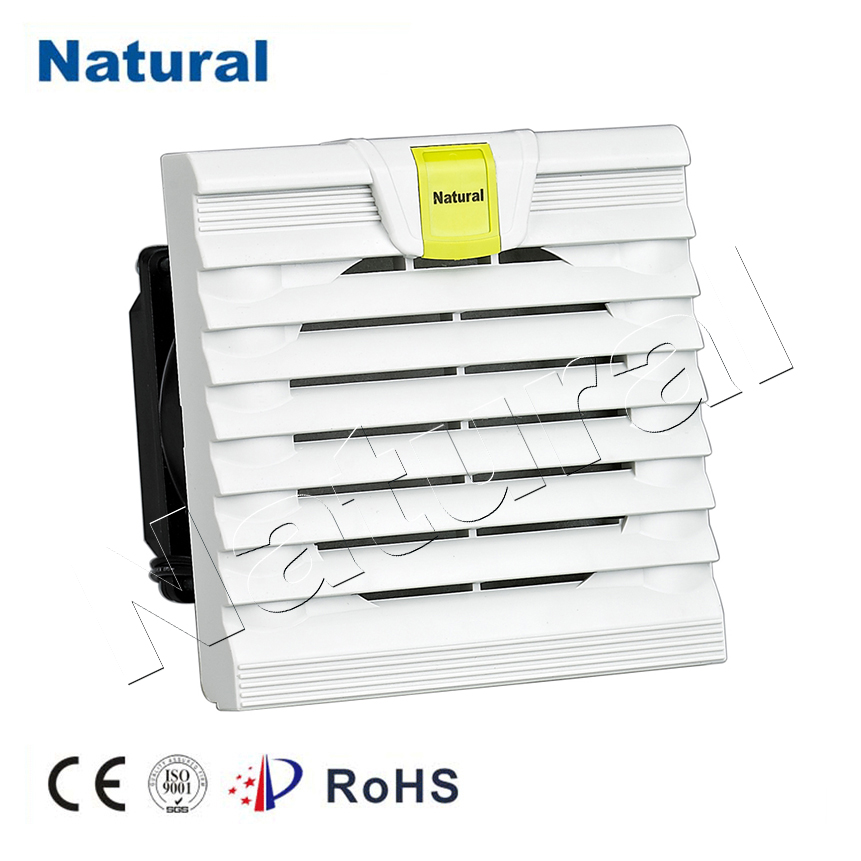In today’s rapidly evolving technological landscape, electronic equipment plays a pivotal role in various industries. From data centers and telecommunications to industrial automation and home appliances, cabinets housing electronic components are ubiquitous. These cabinets are susceptible to overheating and dust accumulation, which can compromise their performance and lifespan. To mitigate these issues, cabinet fan filters have emerged as essential components for efficient cooling and dust control.

The Need for Cabinet Fan Filters Electronic equipment generates heat as a byproduct of its operation. In enclosed cabinets, this heat can build up quickly, leading to overheating and potential damage to sensitive components. Cabinet fan filters address this issue by improving airflow within the cabinet. They are designed to dissipate heat effectively and maintain a stable operating temperature for the enclosed electronics. Additionally, dust and airborne particles pose a significant threat to electronic components. Over time, dust accumulation can impede airflow, clog ventilation pathways, and cause short circuits. Cabinet fan filters act as a barrier against dust, ensuring that only clean air enters the cabinet. This protection extends the lifespan of electronic equipment and reduces the need for costly maintenance and repairs. How Cabinet Fan Filters Work Cabinet fan filters are relatively simple in design but highly effective in function. They consist of a frame typically made of lightweight, durable materials such as aluminum or plastic, and a filter media. The filter media is where the magic happens – it captures dust particles and prevents them from entering the cabinet. Installation is straightforward. Cabinet fan filters are designed to fit snugly over the intake or exhaust fans of the cabinet. As air is drawn into or expelled from the cabinet, it passes through the filter media, which traps dust and particles. This ensures that the air circulating within the cabinet remains clean and dust-free. Benefits of Cabinet Fan Filters Enhanced Cooling:By improving airflow, cabinet fan filters help maintain optimal operating temperatures for electronic equipment, preventing overheating and associated performance issues. Dust Control:The primary function of cabinet fan filters is to prevent dust from entering the cabinet. This significantly reduces the risk of component damage, short circuits, and system failures. Extended Equipment Lifespan:With proper dust control and cooling, electronic components are more likely to have a longer lifespan, reducing the need for frequent replacements. Energy Efficiency:Efficient cooling and reduced dust buildup mean that electronic equipment operates at peak efficiency, consuming less energy and lowering operational costs. Reduced Maintenance:Cabinet fan filters are cost-effective solutions that reduce the need for regular maintenance and cleaning of cabinets, saving both time and money. Improved Air Quality:In applications like data centers, where air quality is critical, cabinet fan filters help maintain a clean and dust-free environment for sensitive equipment. Choosing the Right Cabinet Fan Filter Selecting the appropriate cabinet fan filter is crucial to maximizing its benefits. Consider factors such as the size of the cabinet, the type of equipment housed within, and the operating environment. Different filters offer varying levels of filtration, so choose one that suits your specific needs. In conclusion, cabinet fan filters are indispensable components for anyone dealing with electronic cabinets. They provide efficient cooling, dust control, and improved equipment longevity. By investing in quality cabinet fan filters, you not only protect your valuable electronic equipment but also ensure its optimal performance and reliability. In today’s fast-paced technological world, these filters are the unsung heroes that keep our electronics running smoothly.